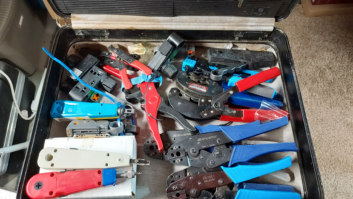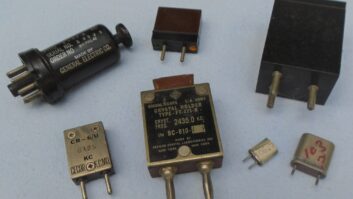
https://docs.google.com/forms/d/e/1FAIpQLSdPf0xmahJmFOOgjT82pn2bPXK-kkmJgZ0sbSJ7Qx-GuP4R2Q/viewform
Dear Editor,
I just got to read the Sept. 25 issue and would like to add a comment on the article “Seeking Enlightenment on Lightning Protection?” by Jeff Welton as it pertains to fiber optic lightning immunity.
I live and work in Iowa where, like most flat states, if you stick a 10 penny nail in the ground, it will probably take a direct lightning hit in the next storm.
Four years ago, my telephone provider switched from copper pair and DSL to homes and businesses to direct fiber. This was a great thing for my internet, when went from 5 meg down and 1 meg up to 100 meg both ways. And all was well until the next summer.
A fairly active thunderstorm came through and there was a strike near the end of our driveway about 1/4 mile from our home. I knew it was close because there are two light fixtures out there, and the bulbs were both blown and melted into their sockets.
Well, after the strike, we had no phone and no internet; also the television, Apple TV box and two computers wouldn’t turn on. It wiped the phone company’s fiber-to-copper modem mounted on the outside of the house, wiped the router, both computers, the Apple box and the input board on the television where the HDMI cable from the Apple box was plugged in.
After the phone company fixed their problems and I got the TV fixed by Apple (and fixed the television myself and threw out the computers), we were back to normal.
I thought maybe it had hit the lights and come back through the AC line, or hit my ham tower,. I checked all the grounds and let it go, figuring the fiber is glass, it couldn’t possibly come through there.
A year later almost to the day, same exact thing. This time it didn’t damage the outside lights — just the modem, router, Apple TV, television and another computer.
Now I was suspicious. I told the telephone repairman, “It seems like we never had trouble when we had copper pairs; but now since you guys went to fiber, we are having lightning damage to anything connected to the fiber.”
Well, the guy was on the ball. He said, “You know, the fiber is in a copper shield to protect it from crushing; maybe it’s coming in on the copper shield.”
The shield was bonded to the modem, which had the usual four-foot ground rod driven. Next day, they sent a crew that terminated the copper shielded cable outside and ran just a piece of fiber, one strand into the house and moved their modem to the basement.
Now there is a length of 15 feet of pure glass between the incoming cable and the modem. Since that was done two years ago, we have had no trouble, though the storms are as potent as ever.
Watch out for buried fiber, it can be destructive. It’s not all glass.
Ron Schacht
Kensett, Iowa












